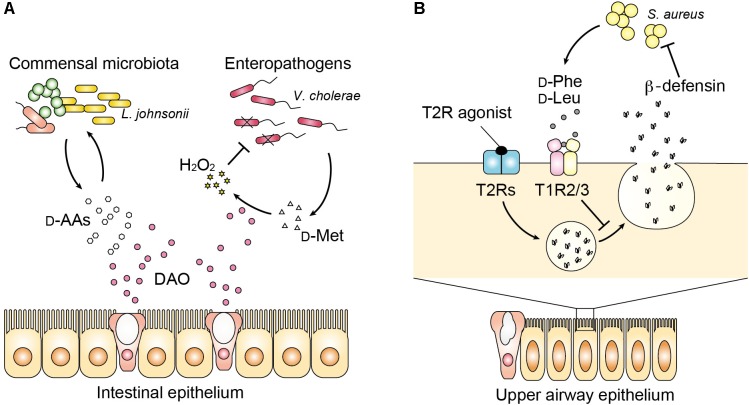FIGURE 2.
Host–microbe communication with D-amino acids in the mucosa. (A) DAO influences luminal bacteria in the intestinal mucosa with bimodal functions. DAO modifies the composition of commensal microbiota partly by modulating availability of D-amino acids for bacterial growth. On the other hand, DAO limits colonization of enteropathogens such as Vibrio cholerae by generation of H2O2 through oxidation of bacterial D-amino acids. (B) In the upper airway, bacterial D-phenylalanine and D-leucine bind to the sweet taste receptor (T1R2/3). Release of antimicrobial peptides including beta-defensin by activation of the bitter taste receptor (T2Rs) is suppressed by signaling from the sweet taste receptor.

